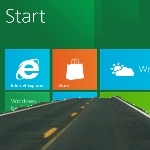
Woody Leonhard/Windows Secrets Newsletter
The Next Steps for Windows 8
Work on Windows 8 is in the home stretch, but predicting its success is still pure speculation — probably more so than with any previous Windows release.
Microsoft’s announcement that it will build and sell its own Windows 8 computers just adds more drama to an already opaque roll-out schedule.
What we’re going to see in the next few months
I’ve been working with Windows 8 for four months now — 16 hours a day, seven days a week. I’m putting together the thickest book I’ve ever written, as befits the thickest operating system I’ve ever used. My perspective is that of a regular, everyday Windows 8 home and business user running salt-of-the-earth applications. Nothing fancy.
What I’ve seen to date isn’t comforting for experienced Windows users. In the March 8 Top Story, I talked about the problems at length: no Start menu, the new tiles on the main screen, finger-friendly features, and a lot of glamour and glitz (none of which has changed significantly in the past three months).
What has changed — potentially turning the Windows world on its ear, actually — is Microsoft’s announcement that it’s entering the tablet business with two “Microsoft Surface” devices. That’s a kick in the face for HP, Dell, Lenovo, Asus, Acer, and all the other hardware manufacturers who seem to be sailing along in a me-too, minor-upgrade mode. The new tablets — one for Windows RT (the ARM-device version), the other for Windows 8 Pro — are complete departures from Windows machines currently on the market.
Pause for a primer on Windows 8 versions
Windows RT doesn’t have a Windows 7–style desktop, and it doesn’t run the kinds of programs you’re running right now. You can run only Metro-style programs on a Windows RT computer, and they must come from the Microsoft store. Most of what we know about Windows RT has come from Microsoft and from demos on tablets (such as the recently announced Surface with a detachable keyboard) or on devices that look like Ultrabooks with docking keyboards.
Windows RT runs on ARM chips, not on the Intel/AMD chips found in traditional PCs. Supposedly, ARM chips aren’t as powerful, power-hungry, or hot as Intel/AMD chips, which is why they’re used in mobile devices. That said, computer manufacturers are coming up with ARM-based machines that look every bit as powerful as today’s Ultrabooks but will use Metro-style applications.
This excerpt appears with permission from Windows Secrets Newsletter.




